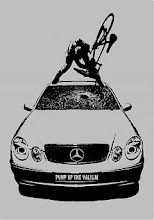

============================================================================
Edit: While at camp, a reporter and friend of NMD wrote a short opinion piece on the shrines, which articulates much better the importance of them than what I have done. This is from the Arizona Daily Star
http://www.azstarnet.com/sn/border/199349 (original article with photos)
Opinion by Ernesto Portillo Jr. :
'Sacredness of the journey' is clear at tiny religious sites
In a deep Arivaca ravine, less than 10 miles north of the border, the usual evidence of illegal border crossers can be found.
There are empty plastic bottles of Electrolyte, water and food tins. There are abandoned pieces of clothing and backpacks.
But there is other evidence, striking and rarely seen.
In a natural niche in the face of a rock wall, ascending about 40 feet, is a religious shrine.
Tucked into the crevice are rosaries; prayer cards to various images of Mary, mother of Jesus; crucifixes; St. Jude; and the Sacred Heart of Jesus votive candles. There is also a small prayer book, a pen, a key chain, a color photograph of a girl 5 years old or less, matches, medallions and peso coins.
Rivulets of dried wax from burned-out candles streak down the rock. Patches of black candle soot cover inside the roof of the nicho.
Next to the opening, two small rocks pin the top corners of a scarf with the image of the Virgin of Guadalupe. Off to the other side are large blue and clear votive candles. Some are broken into shards.
This is a rest stop of prayers on a desperate path used by illegal border crossers.
Volunteers with No More Deaths, the humanitarian assistance group that has spent the past four summers rendering aid to hungry and injured border crossers, have discovered various shrines along favored routes like this ravine.
For the volunteers, the shrines reflect something meaningful and unexpected.
"I've never been a religious person," said Walt Staton, a volunteer with No More Deaths.
But the shrine created by the undocumented migrants has given Staton a different perspective.
"I can feel the sacredness of the journey," Staton said.
The shrines evolve as items are scattered by the rain and wind, and new items are placed on the shrines by border crossers. Some humanitarian volunteers also add items.
The shrines are not common, but as the volunteers discover new, more remote routes they are likely to find more shrines.
Juanita Sundberg, a cultural geographer at the University of British Columbia in Vancouver, examined the shrines this summer. She and local documentary photographer Michael Hyatt are working on a project documenting the shrines.
The religious way stations provide a wider glimpse of the people who walk miles in difficult terrain, risking their lives, she said.
"They are valuable because they tell us a lot about the people who are crossing, their spirituality, background and courage," said Sundberg.
The shrines serve as a reminder of hope to other border crossers, Sundberg said. The stops provide a place to pause and pray for family left behind or contemplate the unknown dangers that await them.
But not all the shrines are devoted to sacred saints. Some yards away in the ravine is another shrine in a larger opening, like a grotto.
Inside is a plastic-encased image of Jesus Malverde, the folk "saint" to drug smugglers. The image hangs on two thin branches behind a row of votive candles to the Virgin of Guadalupe and St. Jude, the patron saint of lost causes.
But Malverde is not exclusive to drug runners, said James "Big Jim" Griffith, a longtime folklorist retired from the University of Arizona who has seen pictures of the shrines.
The Malverde shrine represents a general petition from border crossers who want to get their things and themselves to their destination, said Griffith, author of "Victims, Bandits and Healers: Folk Saints of the U.S.-Mexico Borderlands."
There are other shrines elsewhere. One is at the bottom of a gnarled juniper tree. It contains a small mound of coins in a tin, a horseshoe, a bright-red wool scarf and religious images. There also is a booklet, "Introduction to Insight Meditation," left several months ago by a Buddhist monk who visited the shrine, said Steve Johnston of No More Deaths.
Southwest book author Byrd Baylor, a longtime Arivaca resident, said she has seen border crossers on her property carrying Bibles and candles. There are several shrines around her house.
The shrines signal powerful messages to border crossers who reach them, Baylor said.
"The shrines are a chain of hope and faith."


















































